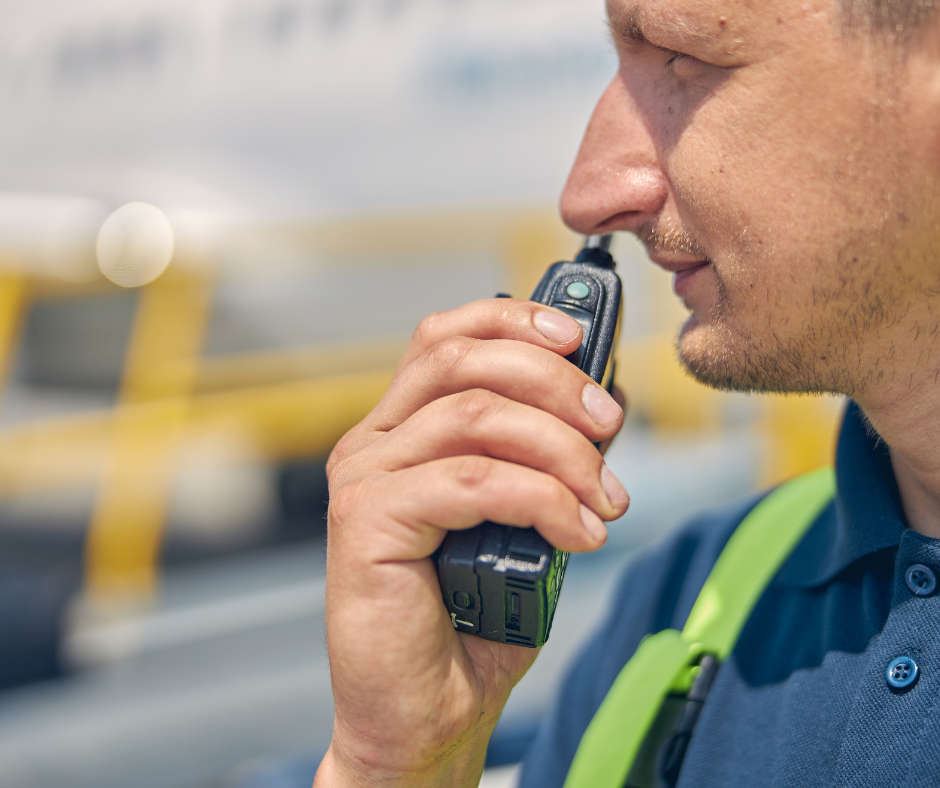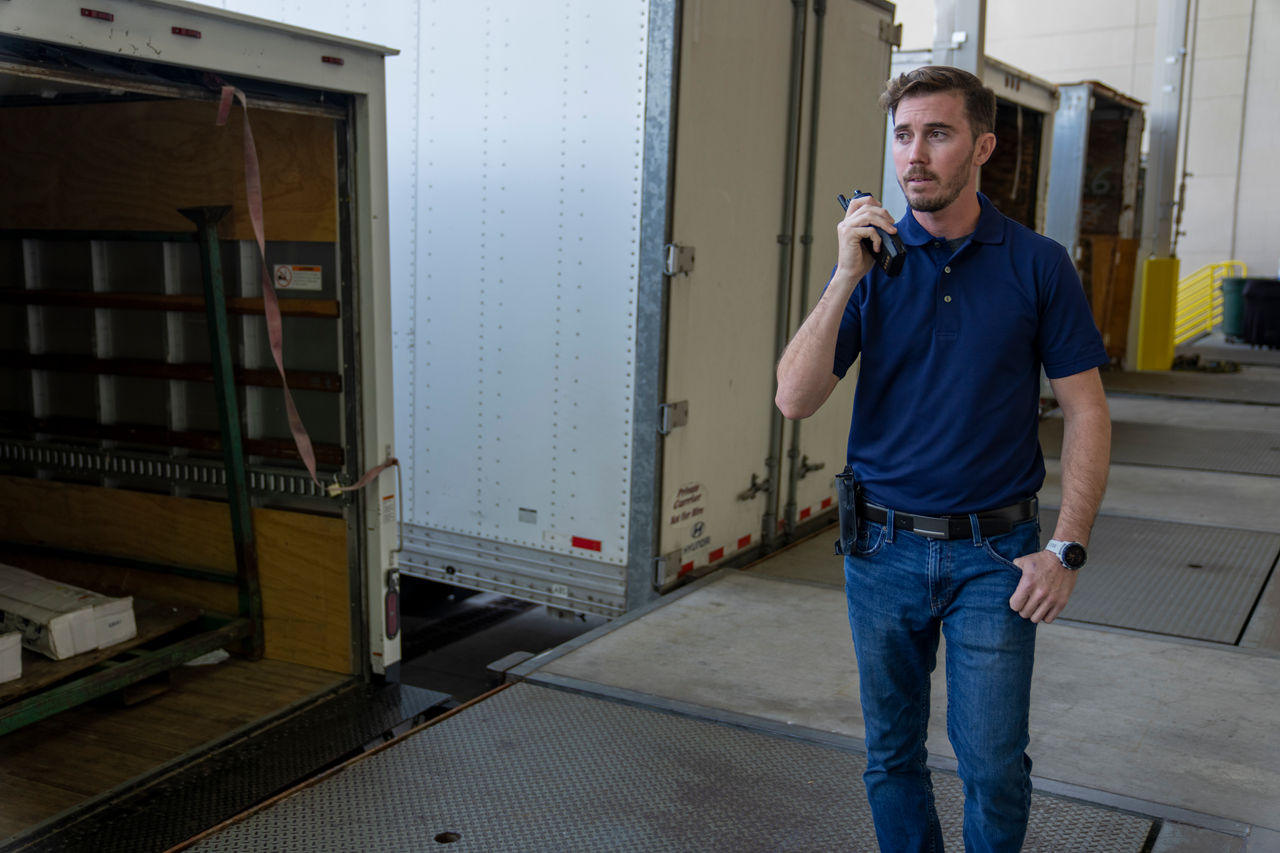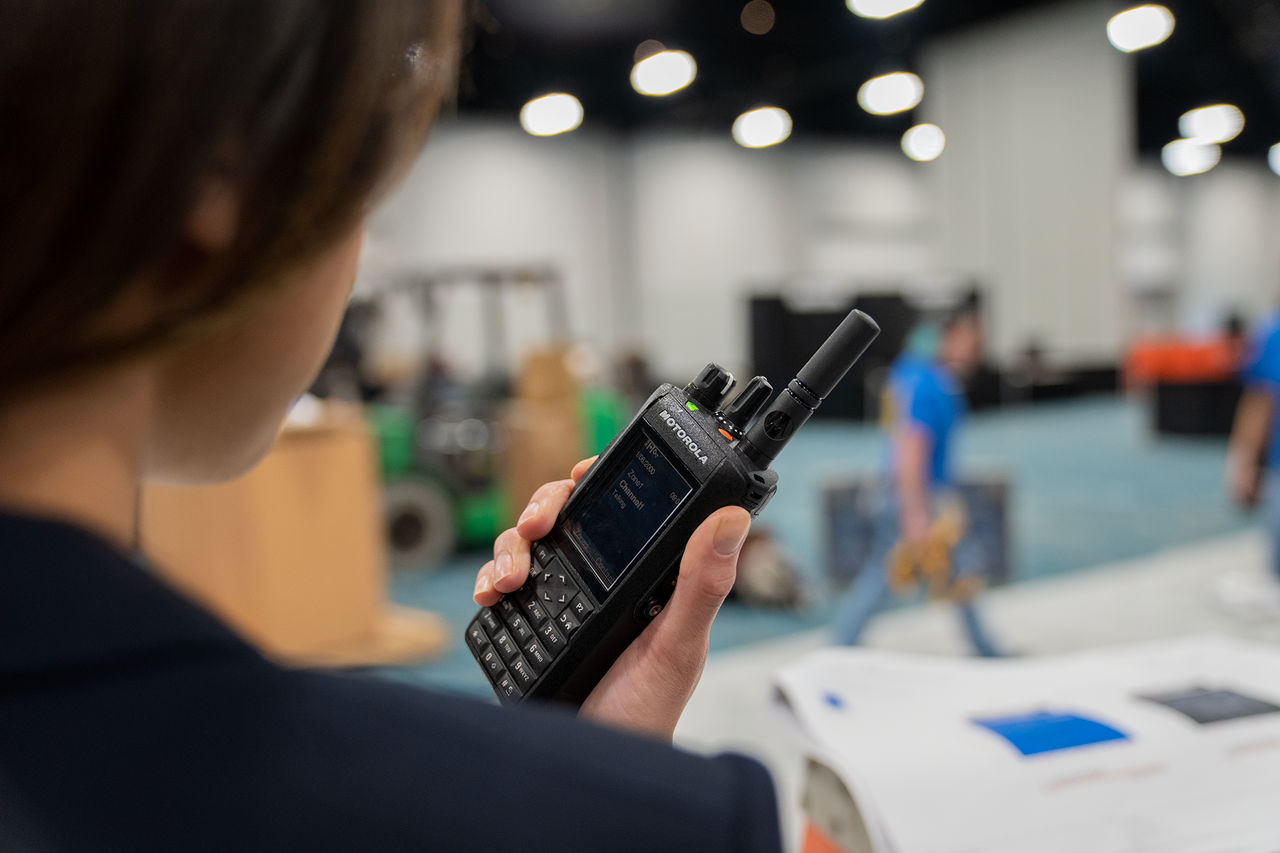Wide area vs on-site two-way radios: Which one do you need?


In the evolving landscape of communication, two-way radios remain an indispensable tool for businesses and individuals seeking reliable and efficient communication solutions. This guide explores the key differences between wide area vs on-site two-way radios to help you determine which one best fits your needs.
Understanding Two-Way Radios
Two-way radios, often called portable radios or walkie-talkies, are designed to allow instant communication without relying on cellular networks. This feature makes them ideal for diverse applications, from construction crews to public safety and retail stores.
Modern digital two-way radios offer advanced features, enhanced coverage, and the ability to communicate across multiple sites. Their functionality is powered by different frequencies, including UHF (Ultra-High Frequency) and VHF (Very-High Frequency), catering to varying ranges and terrains.
Wide Area vs On-Site Two-Way Radios
When it comes to choosing a communication system, understanding the difference between wide area and on-site two-way radios is essential. Both systems are tailored to specific needs and operational environments, offering distinct advantages based on their intended use.
Wide area radio systems provide extensive coverage, making them ideal for organisations that operate across multiple sites or large geographical areas. These systems leverage advanced technologies, such as digital radios and higher antenna heights, to ensure reliable communication even in challenging terrains. They are commonly used by industries that require seamless connectivity across vast regions, such as logistics, emergency services, and multi-site business operations. With wide area systems, users benefit from robust signal strength, even when communicating over long distances or between different locations.
On-site two-way radios, in contrast, are specifically designed for localised use. They excel in environments where communication is confined to a specific area, such as retail stores, warehouses, hotels, or construction sites. These radios prioritise clarity and reliability within a smaller range, ensuring that teams working in close proximity can communicate effectively without interference.


Seamless Communication, Wide Area or On-site
Choosing the right two-way radio system is crucial for seamless communication, whether across wide areas or localised sites. Critico offers a range of wide area and on-site two-way radios. Contact our team to find the perfect solution tailored to your requirements.
Key Differences – Wide area vs On-site Two-Way Radios

Coverage
Wide area radios are optimised for large-scale coverage, making them suitable for businesses that need to connect teams across towns, cities, or even regions. On-site radios, however, are better suited for single-location use, where communication requirements are limited to a specific building or area.

Channels
Wide area systems often feature more channels, allowing multiple teams to communicate independently. This is particularly beneficial for larger organisations with diverse departments or operations. On-site radios typically have fewer channels but are sufficient for smaller teams working in the same location.

Battery Life
On-site radios often boast longer battery life due to their reduced power consumption, as they don’t need to transmit over extensive ranges. This makes them a practical choice for day-long shifts in confined settings. Wide area radios, while powerful, may require more frequent charging or backup batteries due to their broader coverage capabilities.

Digital Radios: The New Standard
Digital radios have transformed radio communication by offering features like text messaging, GPS tracking, and advanced safety options. They also improve overall efficiency through better sound quality and enhanced reliability in loud environments.
Some popular models, like Motorola two-way radios, provide rugged durability and superior battery life, making them ideal for challenging conditions.
Choosing Between UHF and VHF Radios
• UHF Radios are perfect for indoor use and urban environments with obstacles like walls and buildings.
• VHF Radios are better for open spaces like fields or waterways.
When deciding which to use, consider the terrain, the range needed, and how many channels are required.

Key Features to Consider
When selecting a two-way radio system, prioritise these features:
- Reliable Communication: Essential for maintaining operational efficiency.
- Safety Features: Emergency buttons and lone worker alarms enhance workplace safety.
- Battery Life: Opt for longer battery life to reduce downtime.
- Advanced Features: Look for GPS tracking, hands-free options, and the ability to operate across multiple frequencies.
- Durability: Rugged radios with high IP ratings ensure they withstand harsh conditions.
- Signal Penetration: UHF radios provide better signal penetration through walls and dense materials, making them ideal for multi-story buildings or industrial environments.
- Interference: Consider the potential for interference in your area. UHF radios may experience less interference in urban settings compared to VHF.
- Antenna Size: VHF radios often require larger antennas for effective performance, which could affect portability in certain scenarios.
- Licensing Requirements: In the UK, two-way radio licensing is regulated by Ofcom, which requires businesses and individuals to obtain a license for operating two-way radios, typically under the Business Radio license categories. In Ireland, ComReg oversees radio communications and mandates licenses for two-way radios, ensuring compliance with frequency allocation and usage policies.
- Environmental Factors: Consider weather conditions or environmental challenges. VHF signals tend to travel further in open environments but may struggle in dense urban areas.
- Range Extenders: For larger sites or wide area needs, look for radios compatible with repeaters to extend signal range.
- Audio Quality: In noisy environments, radios with noise-cancelling technology or enhanced audio clarity are invaluable.
- Ease of Use: Simple, intuitive controls are critical for quick operation, especially in emergency situations.
- Scalability: Choose a system that can grow with your business, adding more radios or channels as your needs expand.
- Integration Options: Some radios can integrate with existing systems, such as dispatch software or mobile phones, offering enhanced flexibility.
- Power Output: Higher power output ensures stronger signals and broader coverage, especially for VHF systems in open areas.
- Customisable Settings: Radios with programmable buttons and customisable channel configurations allow better personalisation for specific tasks or team needs.

FAQ
Can wide area radios be used for on-site communication?
Yes, wide area radios can be used on-site, but their features may be excessive for localised communication. For efficiency and cost savings, on-site radios are better suited for confined areas.
Do I need a license to operate wide area or on-site radios?
In Ireland and the UK, most wide area radios require a license from the relevant authority, while many on-site radios can operate on license-free frequencies like PMR446. Always confirm your local licensing requirements.
How do I determine the range I need for my two-way radio system?
Assess the size of your operational area, the number of obstructions (like buildings or trees), and whether communication is required indoors, outdoors, or across multiple sites.
Can wide area systems connect teams across different locations?
Yes, wide area systems can link multiple teams working in different locations, ensuring seamless communication across cities or regions.
What additional features should I consider for wide area radios?
For wide area systems, GPS tracking, multi-site connectivity, and repeater compatibility are essential features to ensure smooth operation over vast distances.
Can I use the same two-way radio system for indoor and outdoor communication?
Yes, but the choice of UHF or VHF radios will significantly impact performance. UHF is better for indoor use, while VHF excels in open outdoor environments. Dual-band radios can offer flexibility for both scenarios.
How many radios can communicate on the same channel?
There’s no strict limit, but having too many users on the same channel can lead to communication delays or overlap. For larger teams, consider systems with multiple channels for better organisation.
Are there any ongoing costs with wide area or on-site radio systems?
For licensed radios, there may be an annual licensing fee. Additionally, maintaining repeaters, upgrading batteries, or replacing accessories can incur occasional costs. However, these systems typically have no recurring charges like mobile phone plans.
Can two-way radios work underground or in basements?
UHF radios generally perform better in such environments due to their ability to penetrate obstacles. However, signal boosters or repeaters may be needed for extensive underground coverage.
What happens if radios from different manufacturers are used together?
As long as the radios operate on the same frequency and support the same communication protocols, they can work together. However, compatibility issues may arise with advanced features or digital encryption.
How do I select the right number of channels for my team?
Evaluate your team structure. For example, if you have multiple departments or groups working simultaneously, each may need its own dedicated channel to avoid interference and improve communication efficiency.
What industries typically use on-site two-way radios?
On-site radios are widely used in retail stores, construction sites, hotels, warehouses, and events where communication is confined to a single location.
How can I ensure my radios work in noisy environments?
Choose models with noise-cancelling technology and loud, clear audio output. Accessories like headsets can also help maintain communication in loud environments.
Are digital radios better than analog for wide area or on-site use?
Digital radios generally offer superior range, audio clarity, and features like text messaging and data transmission, making them a better choice for both wide area and on-site systems.
Can two-way radios replace mobile phones for business communication?
Yes, in many cases, two-way radios provide faster, more reliable communication without recurring monthly fees, making them a practical alternative for businesses.
What are the main maintenance requirements for two-way radios?
Keep the radios clean, charge batteries regularly, and inspect antennas and accessories for wear and tear. Proper maintenance ensures optimal performance and longevity.

Get in Touch
For more information on how to choose the right two-way radio and how Critico’s solutions can benefit your organisation, contact us today.
